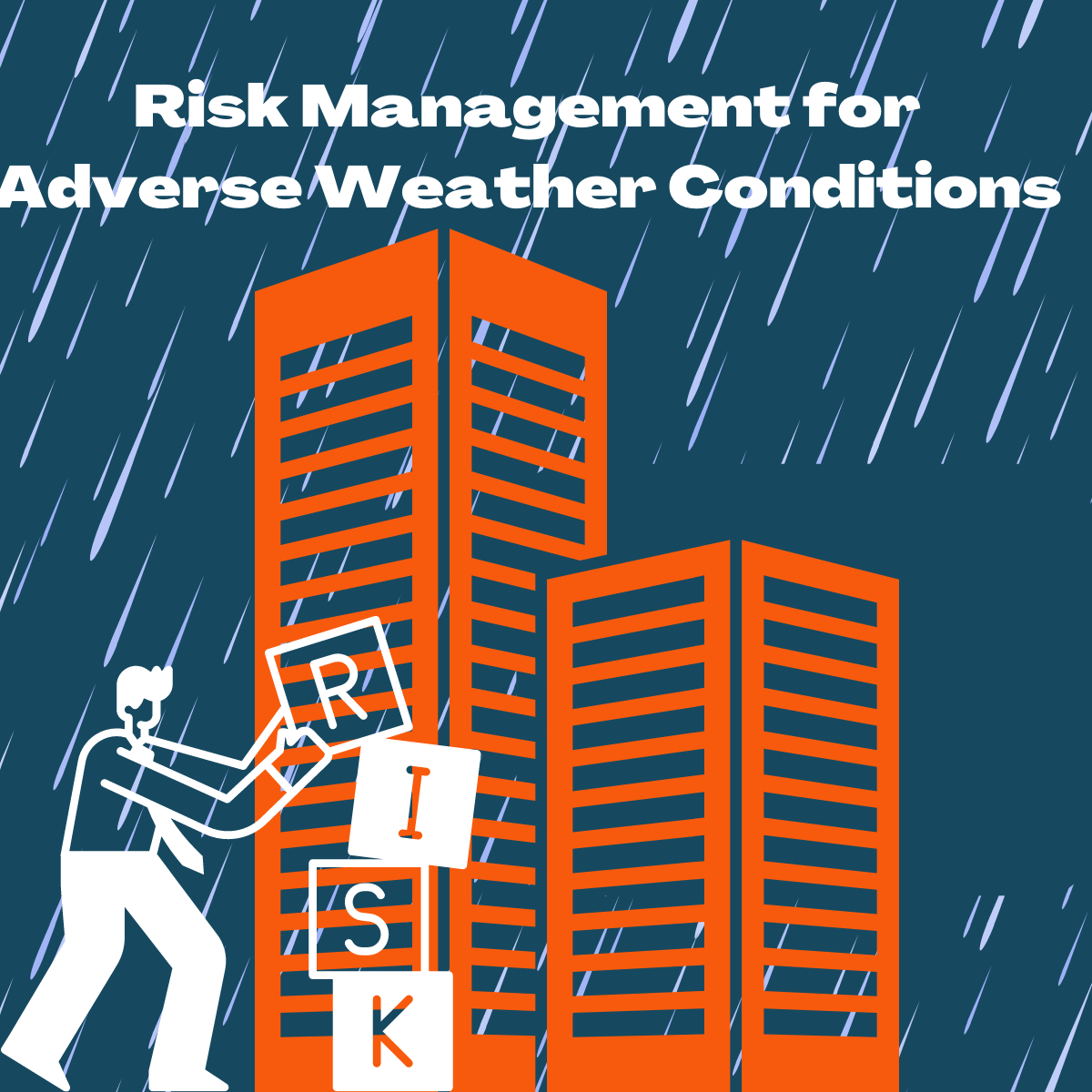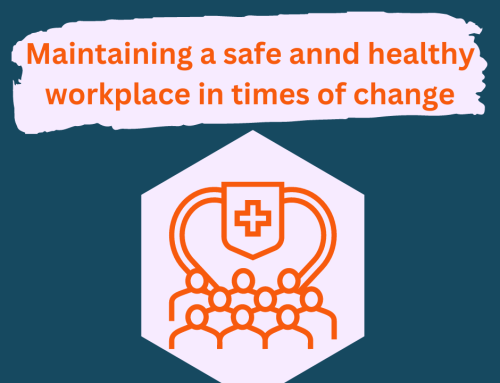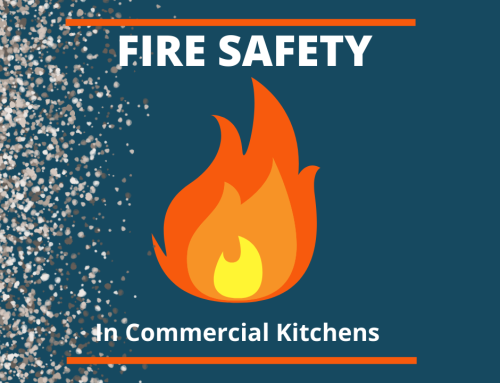Risk Management for Adverse Weather Conditions
This blog was developed from NIG Risk Assist to help you manage your business effectively during adverse weather conditions. Use this blog to inform senior staff of steps you can take in situations where the weather impacts business in order to find a solution to continue business.
___________
Numerous businesses across the nation may be impacted by weather variations and flooding. There is frequently little time to react when unfavourable conditions arise without warning and situations pass fast. Employers have a legal obligation to keep the workplace safe when severe weather can be foreseen and the conditions persist. These obligations entail making sure that they have taken all reasonable precautions to be safe and that there is nothing extra that could have been done to prevent an accident or harm.
GUIDANCE
You must constantly evaluate the hazards brought on by unpredictable weather conditions and take appropriate action.
- How have weather patterns in the past affected your company, your activities, and your community?
- What are your weaknesses?
- Consider compliance, operation and logistics, finances, people – customers and staff, locations, and your brand’s reputation.
Yes, it may seem intimidating, but if you break it down and assign tasks to your team, methods and procedures to “expect the unexpected” may be set up.
Health & Safety
To keep them warm and safe while working outside in bad weather, people must be given the proper protection equipment (PPE), which may include caps, gloves, safety boots, and high visibility padded jackets. Your risk assessment should include the working environment and conditions for individuals for whom you are responsible, and in cases of extreme weather, this should be reassessed and, if necessary, additional measures and personal protection put in place.
The risk in some types of labour increases dramatically in cold weather, such as the effects of vibration on the body and the possibility of falling from a height in the manufacturing and construction industries.
Here are some reasonably doable things you could do:
- To guarantee that protective gear continues to be effective in keeping people warm, either more clothing is sometimes needed or the current article has to be replaced.
- When not in use, you should make sure that there is a convenient location where staff may dry their work attire.
- Additional breaks and the provision of hot beverages might be necessary.
- Rest places might require temporary supplementary warmth.
- Supervisory inspections should be strengthened to make sure workers are healthy and unaffected by the weather.
- Some more dangerous tasks might need to be postponed or require additional safety precautions.
Workplace temperatures
Regarding working temperatures, particularly in inclement weather when the workplace is cold and the heating is insufficient, it is one of our most commonly asked topics at this time of year. Thermal comfort is a challenging subject because no two jobs are alike and some employees may feel the cold more than others.
Unless a lot of the work requires intense physical labour, which requires a lower temperature of at least 13 °C, workrooms should typically be at least 16 °C.
- In most occupations, the sole legal requirement for temperature is to make sure that suitable temperatures are maintained.
- Think about how you will maintain a reasonable temperature, take into account the type of work and the location, such as working outdoors, in a cold storage facility, or in a glass house, and allow time for warming up or cooling down. This could be accomplished by occasionally changing the work activity or location.
The nature of the workplace should always be taken into consideration, and it is sometimes okay for it to be cooler when individuals first come at work. Additional precautions can be needed in bad weather conditions where it is impossible to maintain a workplace at a temperature that is fairly acceptable for workers. Other configurations can include:
- Providing temporary heating
- The provision of additional clothing, such as a fleece or jacket for a warehouse operative
- Additional breaks in a warm rest area
- The provision of hot drinks.
Keep in mind that if you have contractors working on your property, bad weather may significantly increase the risk in their workplace. You, as their customer, should confirm that they have taken the necessary safety measures for both their own and others’ protection. Their method statements and risk evaluations also needed to have been examined by a professional.
- You should record the actions that you have taken on a daily basis; a simple diary entry will act as a suitable record.
Human Resources
Staff travelling to and from work, transportation delays, road accidents, etc. can all be impacted by the weather. You might need to implement flexible working hours to provide yourself more time for travel that is reasonable. Staff members may require emergency time off due to flooding to deal with damage and insurance difficulties. Parents may face childcare challenges if schools close. If you run into staffing challenges or emergencies, you will need to create a policy and agree on minimum coverage for your workplace and activities during key periods.
In extreme circumstances, you should consider whether employees actually need to be at work or if alternate arrangements or remote work opportunities are possible.
Business Continuity
Business Continuity Management helps organisations show that they can maintain service levels and can respond to emergencies effectively because they have made plans to do so (BCM).
An employer should have a business continuity plan with policies and procedures outlining their plans for handling the unexpected or a business interruption if they have the foresight and time to plan for it.
When questioned about their lack of planning, corporations frequently respond, “It won’t happen to us,” “We will cope – we always do,” “We are too big to fail,” and “We are not a terrorist target.” Some people think their insurance will cover everything. Many believe that preparing is a waste of time.
While bombings, fires, and floods make headlines, approximately 90% of occurrences that pose a threat to businesses went unreported and severely hampered their capacity to operate.
In the UK, bad weather causes more supply chain disruptions than unplanned failures of telecom or IT services. Make sure you have a backup plan; can you or your team access emails, stocks, reports, financials, contact information, etc. remotely?
Check out our other blog on business continuity for more information.
Driving Risks (in bad weather and in poor visibility)
Company drivers
In order to ensure employee and public safety, prevent breakdowns or accidents, and ensure safe driving in the current conditions, careful consideration is required. The best advise is to avoid driving unless it is absolutely required; your risk assessment should guide this choice. However, you must pay attention to any advisories issued by the Highways Agency, the Met Office, and other governmental organisations like county or local councils. Keep in mind that situations will vary every day, so you’ll need to regularly check your plans.
Adverse weather conditions include rain, fog, ice, snow, and dust impair a driver’s visibility. The best defensive driving strategies in these situations involve slowing down and maintaining weather-appropriate speeds.
Consider what would occur in the event of a breakdown or if they became stuck in a distant place while making safety arrangements for corporate drivers.
A template paper for an adverse weather policy can be found here.
____________
Talbot Jones Ltd is a family-run Chartered Insurance Broker specialising in Third Sector and Professional risks. Get in touch for free insurance advice, review or quotation.
Talbot Jones Ltd incorporates March Insurance Services, a Chartered Insurance Broker specialising in Agricultural and Hospitality Risks.





